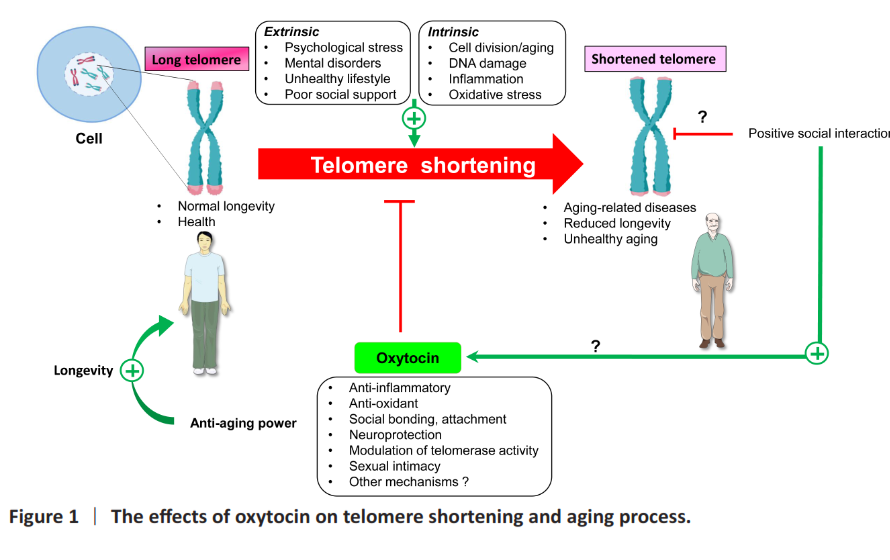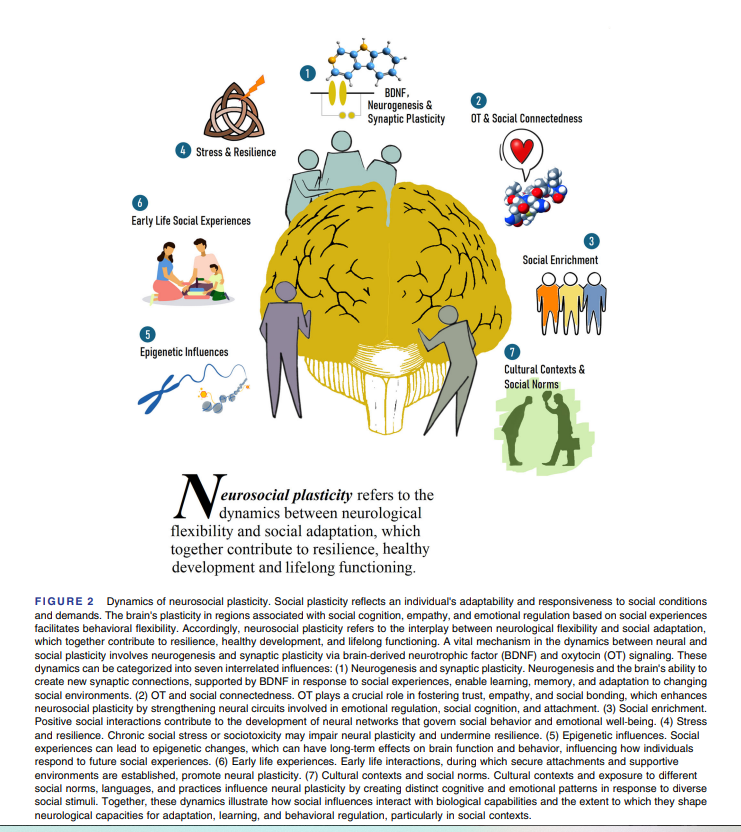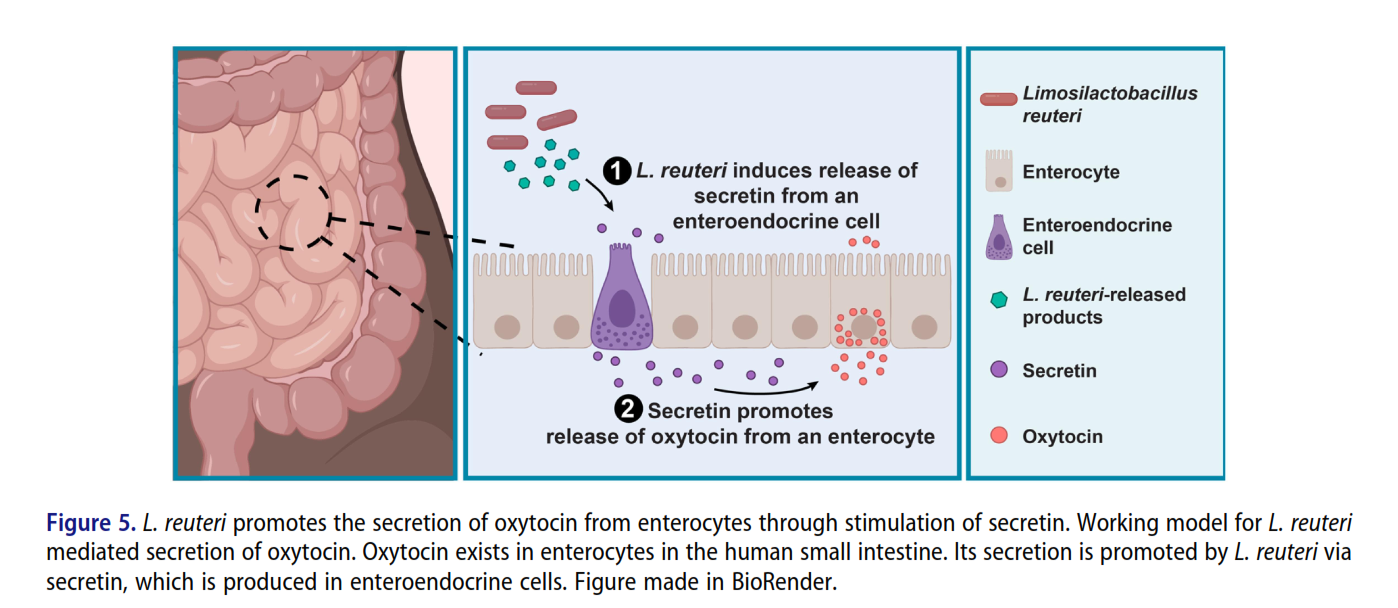The antiaging role of oxytocin
-
Peatbot.com indicated that oxytocin like many others things is healthy but more is not necessarily better.
Peatbot: Oxytocin is a hormone that plays various roles in the body, including in social bonding, sexual reproduction, childbirth, and the period after childbirth. It is often referred to as the "love hormone" or "cuddle hormone" because it is released when people snuggle up or bond socially. However, its effects are not universally positive.
According to the context provided, oxytocin is described as one of the adaptive hormones that can have stress-related responses. It is not solely a "happiness and euphoria hormone" because it can also increase under stress, and its effects are not always beneficial. This suggests that while oxytocin has important functions, it is not inherently "healthy" or "unhealthy" but rather has complex roles that can vary depending on the situation.
The antiaging role of oxytocin (2021)
OXT can alleviate some of the negative consequences of social isolation, reducing glucocorticoid levels. Daily OXT injections in isolated voles was able to prevent the observed negative consequences of social isolation, including the telomeres shortening due to oxidative stress and the accelerated cellular aging process.
Given the importance of telomeres in aging and human health, researches should focus on lifestyle factors that affect OXT system and may alter the rate of telomere shortening and increasing longevity. We suggest that providing social support and assuring a positive social relationship could not only have a positive effect on OXT system but also can be protective for the telomere length. Indirectly, OXT would increase lifespan and improve the human wellbeing. It is important to point out that physical contact, face-to-face interaction, such as hugging and hand shaking, remains necessary actions not only for the oxytonergic system but also for delaying aging process and preserve the human health from illnesses. The effects of oxytocin on the telomere shortening and aging process are illustrated in Figure 1.

Abstract
The human brain functions as a highly integrated system. Interconnected cellular and molecular networks within this system process sensory information, cognitive functions, and motor responses. The brain also exhibits a remarkable potential for plasticity‐driven adaptive learning and memory. Importantly, neuroplasticity serves as a key mechanism of neuroprotection while also enabling the brain to compensate for injury through adaptive structural remodeling. Understanding the brain as a dynamic system requires examining how its components interact to produce adaptive physiological responses and complex behaviors, such as social interactions. Key molecules, such as brain‐derived neurotrophic factor (BDNF) and oxytocin (OT), play pivotal roles in maintaining the brain's dynamic complexity and integrative functioning. In this review, we introduce the concept of “neurosocial plasticity”, which refers to the brain's ability to adapt both neural circuitry and social behavior through the dynamic interaction between BDNF and OT. This concept highlights how BDNF–OT interactions may support both neural plasticity and the capacity for adaptive social functioning. We then explore how their co‐localization, co‐expression, and co‐regulation may regulate neural and social plasticity, ultimately shaping the brain's adaptability and the development of social behaviors across various contexts.

-
Perhaps the safest way to increase oxytocin is microbial.
Microbial stimulation of oxytocin release from the intestinal epithelium via secretin signaling (2023)
ABSTRACT
Intestinal microbes impact the health of the intestine and organs distal to the gut. Limosilactobacillus reuteri is a human intestinal microbe that promotes normal gut transit, the anti-inflammatory immune system, wound healing, normal social behavior in mice, and prevents bone reabsorption. Oxytocin impacts these functions and oxytocin signaling is required for L. reuteri mediated wound healing and social behavior; however, the events in the gut leading to oxytocin stimulation and beneficial effects are unknown. Here we report evolutionarily conserved oxytocin production in the intestinal epithelium through analysis of single-cell RNA-Seq datasets and imaging of human and mouse intestinal tissues. Moreover, human intestinal organoids produce oxytocin, demonstrating that the intestinal epithelium is sufficient to produce oxytocin. We find that L. reuteri facilitates oxytocin secretion from human intestinal tissue and human intestinal organoids. Finally, we demonstrate that stimulation of oxytocin secretion by L. reuteri is dependent on the gut hormone secretin, which is produced in enteroendocrine cells, while oxytocin itself is produced in enterocytes. Altogether, this work demonstrates that oxytocin is produced and secreted from enterocytes in the intestinal epithelium in response to secretin stimulated by L. reuteri. This work thereby identifies oxytocin as an intestinal hormone and provides mechanistic insight into avenues by which gut microbes promote host health.

Oxytocin and the microbiome (2023)
• Highlights.
• Humans and microbes have evolved alongside each other in a symbiotic relationship that transcends generations.
• Gut microbes communicate with the brain via the vagus nerve modulating host oxytocin production and release, with downstream targets including the immune system.
• Lactobacillus reuteri upregulates endogenous oxytocin which yields beneficial health effects.
• The gut-brain-immune axis mechanism could be leveraged to improve sociability, mental health and physical wellness. -
There is thread on reuteri and it has a brief mention of oxytocin as means to increase DHT. There is more on oxytocin buried in video that Hans made.
https://bioenergetic.forum/topic/2188/l-reuteri?_=1764322121932I am still fermenting dairy to make a reuteri yogurt so I think I have my oxytocin levels are at acceptable levels.